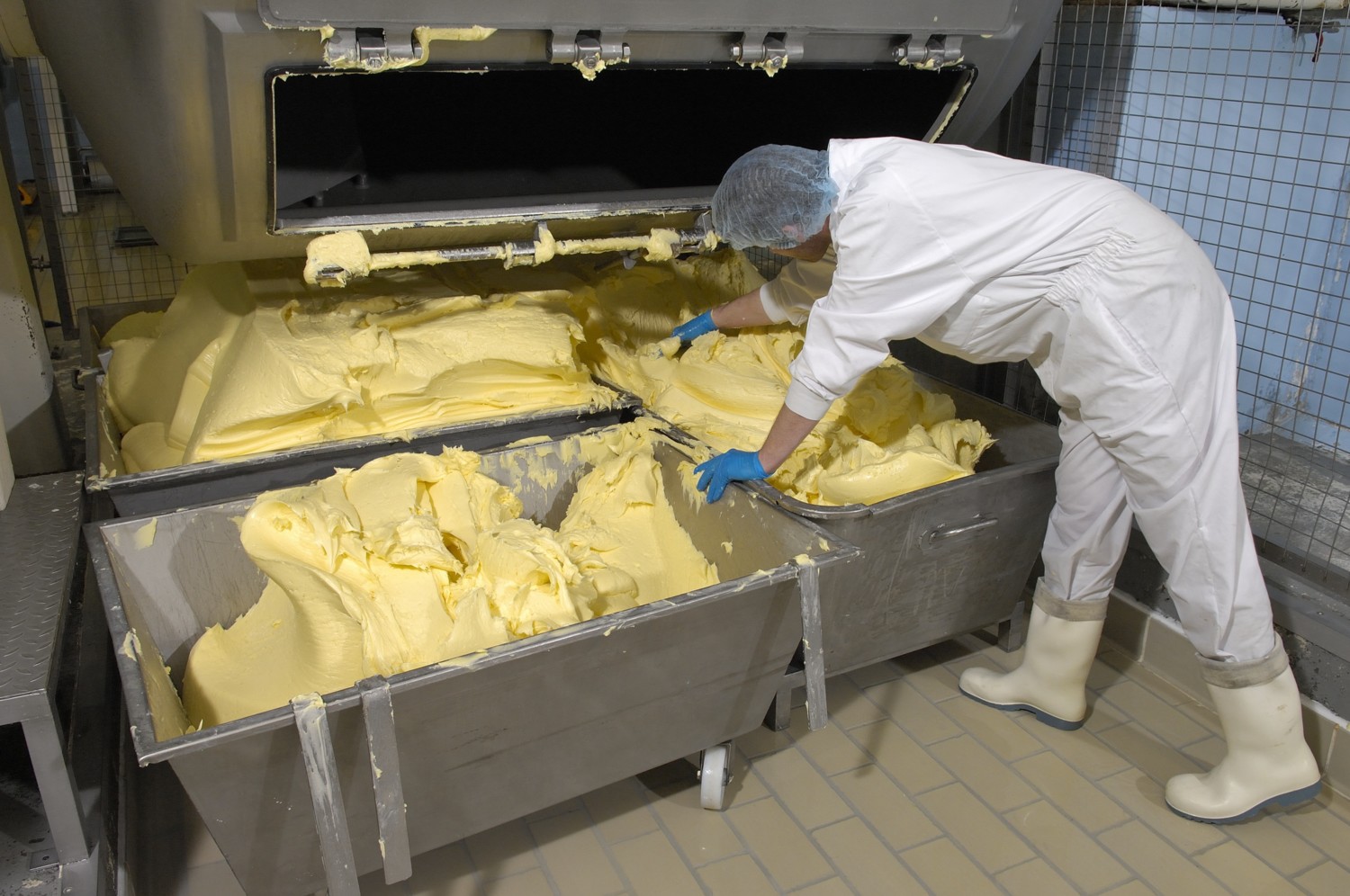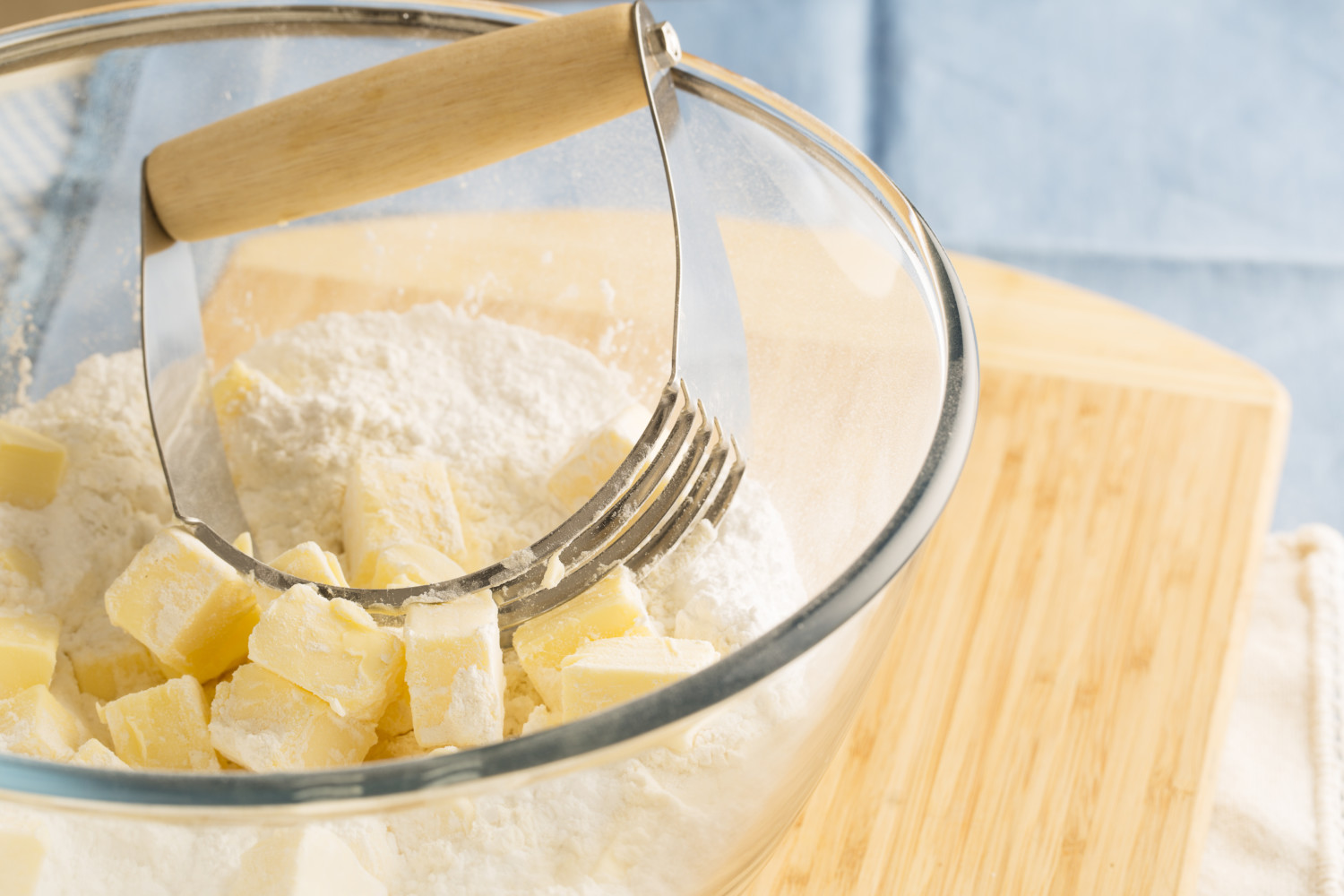People have been churning, spreading and eating butter for thousands of years. Margarine has only been around for about 150 years. But are the two otherwise interchangeable? Yes and no. There are similarities and contrasts between the foods when it comes to how they are produced, the best ways to use them, how they should be stored and even how they might affect your health. Learning the difference between butter and margarine can help you make the best selection when shopping, cooking, baking and eating.
The Difference Between Butter And Margarine Production
Butter is a dairy product made by churning fresh or fermented cream or milk. This process separates the liquid into two parts: liquid buttermilk and semisolid butterfat. Butter must be at least 80% butterfat by law in the U.S., although European butter is richer, with an even higher butterfat content. Sometimes salt is added during this process to produce salted butter.
Since there are many different brands and types of margarine on the market, there is no single list of ingredients or steps for producing margarine. But the major difference between butter and margarine is that the latter contains few to no dairy products. Margarine typically includes water and vegetable oil, such as soybean, corn, palm, canola or olive oil, as well as salt, coloring, natural or artificial flavorings, and sometimes milk powder or an emulsifier, which is an additive that stabilizes processed foods.

Butter vs. Margarine In Cooking And Baking
When it comes to choosing butter or margarine for preparing recipes, there are several differences to consider. Ultimately, you will experience the best results when you use the ingredient called for in a recipe you are following, but there are times when one typically outperforms the other.
Many chefs and home cooks alike prefer butter over margarine in baked goods. Its higher fat content lends a delicious flavor, tender texture and flakiness that makes pie crusts and other pastries appealing. It is also a thick, creamy base for a homemade frosting recipe. For baking, you’ll want to avoid whipped butter or butter spreads that contain oil and other ingredients, as they will not provide the same results.
In cooking, butter is ideal for stirring into rich sauces, patting onto finished steaks and browning to add a savory flavoring to many dishes.
Since most margarine contains no animal products, it can be an excellent ingredient for vegan or vegetarian cooking and baking. Because of its light texture and spreadable consistency, margarine is often favored as a topping for bread, potatoes and breakfast foods, such as waffles, pancakes or toast. It also blends well in pasta or rice dishes. And since it has a higher smoke point than butter does, margarine is a better bet for frying and sauteing.

Health Benefits And Concerns With Butter and Margarine
Margarine gained popularity during the 1980s when people came to believe more widely that saturated fats were a significant cause of heart disease. The spread’s lower price and longer shelf life were a factor, as well. But some recent research, including a study from 2016, shows that butter is not linked to a higher risk for heart disease and could actually be slightly protective against type 2 diabetes.
Margarine can help cut fat and calories when you’re stir-frying or sauteing foods. On the other hand, butter’s higher fat content can increase satiety, helping you feel fuller longer. Neither one is considered a 100% healthful option by medical experts. Instead, most recommend that you compare the two and choose the option that best suits your dietary and cooking needs. Some also recommend that you keep both around and alternate your use to get the benefits of each while moderating your fat intake.
This story originally appeared on Simplemost. Checkout Simplemost for additional stories.


